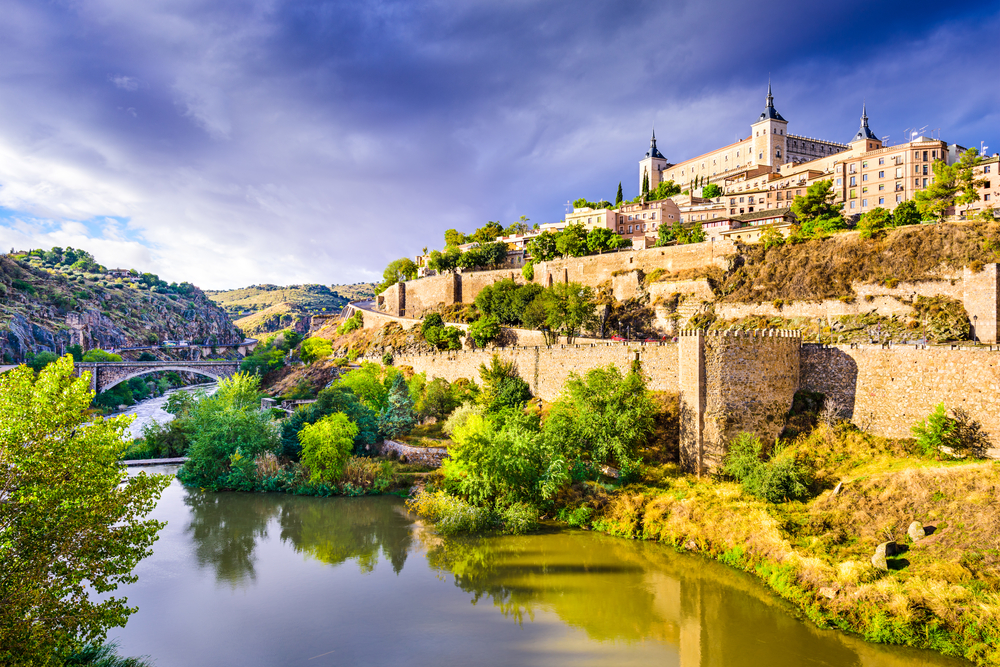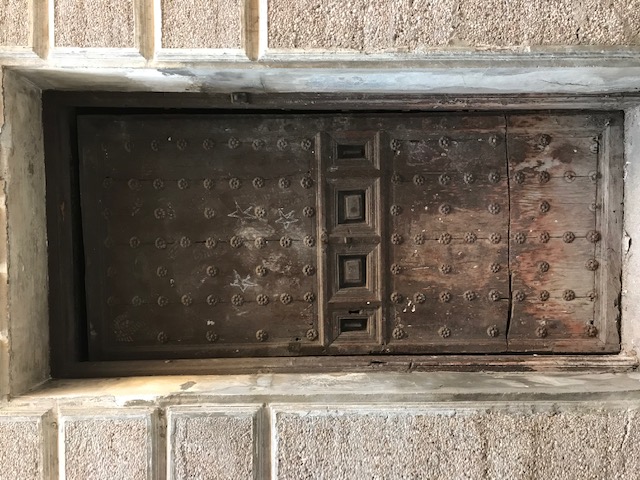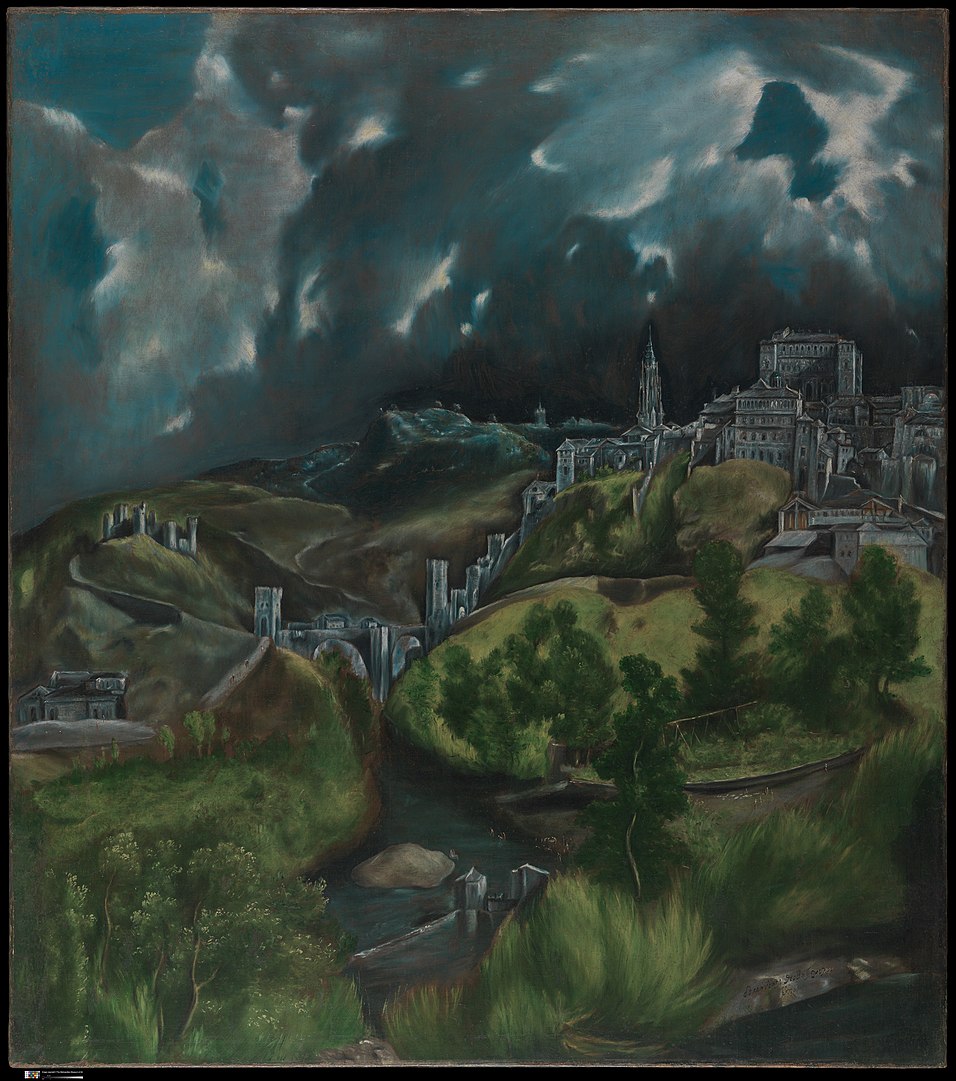
Toledo, the old town (photo © Sean Pavone/Shutterstock)
A trip to Toledo, Spain, on the trail of the Sephardic Jews who were expelled from the Iberian Peninsula in the 15th century and arrived in Bosnia and Herzegovina. A chance for a reflection on memory, the Holocaust, the tragedies of history
All tourist guides, both digital and paper, repeat that Toledo is worth visiting for its churches, the Alcázar fortress, the Alcántara bridge, and above all El Greco. They also mention souvenirs – swords, knives, knight armor – and highlight that Toledo is the capital of the autonomous community of Castile-La Mancha and that the Tagus river creates a ring, unique of its kind, around the city located atop a hill that appears to have been predestined to host a human settlement. Guides also explain that Toledo is the seat of the archdiocese of the same name and often remind tourists that the region is the land of Don Quixote. In Toledo, travellers can buy souvenirs depicting the sad-faced knight and his servant Sancho, and the misguided ones might stumble upon the statue of the immortal character of Cervantes located in a narrow lane of this city which, as the guides state, boasts a long and rich history.
Long and rich... And painful, I say to myself. But, to be fair, not painful for everyone. I also remind myself that in late autumn 2018 I went to Toledo to visit the Jewish quarter of the city. After reading many books on the expulsion of Jews from the Iberian Peninsula, I decided to visit the neighbourhood that in all the other cities of Spain once inhabited by Jews is called "judería".
In this article, I would first like to try to connect, at least implicitly, all the persecutions and pogroms suffered by Jews – from the Iberian Peninsula to Russia, from the words of the thick medieval Christians to the hysteria of Hitler and his contemporary followers. Including, of course, the revisionists. I write this article, but even this year, on the occasion of the Day of Remembrance, I am not sure how many people today, in this hyper-technological world, will hear at least some of these questions about the meaning of memory.
Either way, do not expect me to start swooning over marzipan, saffron, ham, and wine now. I tasted them, I congratulate those who with their hard-working hands give us the fruits, dishes, and drinks typical of this region. I am not even going to bore you with historical notes on Toledo from Roman times to the present day. You can read for yourself how the Jews lived before the Arab conquest of Spain and what happened after the Reconquista and the rise to power of that royal couple that on March 31st, 1492, after "a mature reasoning", decided to "expel all the Jews from our reign so that they never come back”. If you come across Christopher Columbus's diary, you will find a few lines in which the author describes how, while he was travelling west, thousands of Jews expelled from Spain moved east, on all types of boats. The only ports open to Jews were those of the Ottoman Empire. Subsequently, some groups of Jews from Thessaloniki and Constantinople moved to Bulgaria, Serbia, and Bosnia.
If you can say you have been in a place where you have never been, then I had already been to Toledo a long time ago, in the distant 1990s, when I wrote a non-poem of mine in Friuli titled "Toledo, the key in the hand". This non-poem would never have existed if in the period immediately preceding our Yugoslav and Bosnian tragedy, in a wonderful book by Miroslav Prstojević titled Zaboravljeno Sarajevo [Forgotten Sarajevo], I had not read the story, told by an Israeli tour guide, of a Jewish tourist who stopped in front of a gate in Toledo, took a key from his pocket and... the gate had opened! For over four centuries that key had passed from father to son and, about 40 years ago, it ended up in the hands of that Jew who, behind that gate, recognised the house of his ancestors expelled from Spain. "Los que sufren, angustia los guia" [Those who suffer are driven by anguish], recites a verse from a romance of Sephardic Sarajevo. The European Sephardim have never forgotten, even in moments of suffering, Sefarad (land of the West, Hebrew term for the Iberian Peninsula).
That cold and foggy November morning I entered the church of San Juan, which was half empty. The construction of the church was financed by that royal couple who, after "mature reasoning", decided to expel the Jews. Over the centuries, travellers spared no words of admiration for this architectural miracle and its artistic treasures. Even in Toledo I had not been able to refrain from asking myself the question about the relationship between evil, good, and beauty. I leave it to you readers to evaluate the people who hurt others and, at the same time, love architecture, music, literature... After all, throughout history there have been cultured and religious racists, but also Nazis who were moved by the sound of a violin, while remaining deaf to the suffering of the people they humiliated and exiled.
Once I left the monastery of San Juan, I headed towards the small church of San Tomè to see the painting "Burial of the Count of Orgaz" by El Greco. The monographs dedicated to El Greco read that the count of Orgaz died in 1312 and the great painter from Crete portrayed his funeral in the famous painting completed in 1586. The count was an influential man, very religious and great benefactor of the Catholic Church. The church of San Tomè was built thanks to the resources made available by the count, who took care that every year after his death the city of Orgaz donated two rams, sixteen chickens, two skins of wine, two loads of wood, and 800 maravedì to the church and monastery.
Legend has it that, after the death of the Count of Orgaz in Toledo, the sky opened before the body of the noble knight was placed in the tomb above which a light from beyond appeared. At that moment, Jesus, Our Lady, a choir of angels, and Saint Ivano appeared to the citizens of Toledo, while Saint Augustine and Saint Stephen laid the count's body in the burial. For three centuries the noble knight was relegated to oblivion, until a priest decided to denounce the Orgaz authorities for failing to fulfill the commitments towards the count, obtaining compensation that he decided to invest in the decoration of the church of San Tomè in Toledo.
Looking at the painting by El Greco, I had not paid any particular attention to the celestial scene in the upper part of the canvas, nor to El Greco's self-portrait, nor to the portrait of his son. I focused instead on the faces of the painter's fellow citizens – devoted faces, all illuminated by the miracle of mystery. To be clear, those people were grandchildren and great-grandchildren of those citizens of Toledo who a century earlier watched the Jewish quarter empty. Many of the ancestors of the people depicted in El Greco's painting went devoutly – and how else? – to occupy the homes of their fellow citizens forced into exile. The El Greco museum in Toledo is located in a house last owned by a banker named Ha-Levi. This house, as well as many others in the Jewish quarter of Toledo, reminded me that the Sephardim brought their architectural traditions with them also to Bosnia, and especially to Sarajevo.
The Sephardim arrived in Sarajevo, as well as in other parts of the Ottoman Empire, bringing with them the knowledge of various very useful professions, and among them there were also pharmacists and doctors. They also brought to Sarajevo the language of their evil stepmother Spain, her romances and her music, and they kept them for centuries. Over time, Sephardi music has also influenced Bosnian sevdalinke [ancient love songs, steeped in melancholy], including the one titled Kad ja pođoh na Bembašu [When I went to Bembaša], which is about a boy who, in company of a "white lamb", went to visit "his beloved who was looking out of an iron window". Some of the Sephardi families who came to Sarajevo were certainly from Toledo. Many Ashkenazi families also arrived with the Austrian occupier, bringing with them European customs and traditions.
In April 1941, when Bosnia and Herzegovina was included in the independent state of Croatia (NDH), the Jewish community of Bosnia and Herzegovina had 14,000 members. Most of them, around 10,000, lived in Sarajevo and were mostly Sephardic. Of the 9,000 Sarajevo Jews who were deported to the concentration camps, only 1,237 survived. In other parts of Bosnia and Herzegovina there lived about 4,000 Sephardi Jews, of whom 546 survived the war. In that fateful 1941, one in four citizens in Sarajevo was Jewish. During the war, Jewish properties were meticulously and "heroically" looted. Today, after our fratricidal war, only a few hundred Jews live in Sarajevo.
Is there anything casual in history regarding the tendency to label others as unwanted? Is there something casual in trying to annihilate or, in a "better" scenario, persecute and marginalise the other and the different? These are issues much older than any inhabitant of the contemporary world. I felt their insistent weight during my research on the history of Jews of Europe, in particular on the history of the Sephardim in the Balkans. Those questions came back to my mind, materialising visually, when in the old Jewish cemetery in Prague I felt how far distrust and wickedness could go: the Jews of Prague had never managed to obtain authorisation to expand the cemetery, so they were forced to superimpose the tombs (Jaroslav Seifert wrote a moving and wonderful poem).
I saw the stone quarry of the Mauthausen concentration camp and the staircase that led to death; I also saw the crematoria of that concentration camp and those of Auschwitz; mountains of clothes, dishes, glasses. I know about Jasenovac and Gradiška (the latter was a concentration camp for women and children), Topovske šupe and that point on the Danube where Danilo Kiš's father, Eduard Kiš, miraculously survived the massacre of the Jews of Vojvodina; then the concentration camps in Hungary, the Risiera di San Saba in Trieste... I also saw the old Jewish cemeteries in Bosnia, where time stopped in 1941. As happened also in Italy. The Jewish cemetery of San Daniele del Friuli is also impressive, as is that of Rožna Dolina (Valdirose), a few steps from the Italian-Slovenian border. If the gravestones could speak, we would hear hundreds of stories.
Thinking of the first trips, obviously touristy, that I had made after the war of the 1990s from Italy to the newborn countries of the former Yugoslavia, I also remember that between the 20th and 21st centuries in Croatia and Serbia one could easily buy "Protocols of the Elders of Zion" and many other "useful" anti-Semitic books. So, I have seen that too, and I have heard claims that the Jews are to blame for the world's troubles. Dull minds always tend to blame others. Even today in my former homeland you can hear the word čifut, čifutin – a derogatory term for Jews. A Sephardi Jewish friend of my father's once said that he would rather be called a dog than a čifut. He was one of the few Sephardi Jews from Visoko who survived the Second World War. He did not trust the supposed good intentions of the Ustasha government.
Here, in Friuli, the Hebrew term is used to indicate that trickle of paint that remains on the newly painted wall. Who knows, maybe someone will soon begin to use the term migrant to indicate something else, obviously imperfect.
As I walked through the narrow streets of the Jewish quarter of Toledo, I also thought of all those Italian teachers who spare no effort or time to explain the Holocaust to their students in the concentration camps, in front of the crematoria and gas chambers. Direct witnesses to the Holocaust are fewer and fewer, while more and more people belittle or deny the Holocaust. It will be a long, difficult battle to preserve memory against the denial of the facts.
Just as I was reflecting on this question, I got a call from a childhood friend of mine who, like me, has been living outside Bosnia for a long time. When I told him I was in Toledo he claimed to envy me, admitting that he had never seen El Greco's painting "View of Toledo" in person. Then I remembered my father's best friend, Ramiz, now gone. During the Second World War, the Ustasha offered him the job of commander of a concentration camp, telling him: if you do not accept, you will no longer be able to count on our mercy. Ramiz turned down the offer, not knowing what to expect the next day. He was not punished – a miracle. A long time later, he told my father that there is no worse punishment than our conscience's.
On Memorial Day, I ask all the tourists of this world to forgive me: I have nothing against Toledo. I have been there, walked around, looked left and right, back and forth. Reflecting, even if reflecting today seems to have become a luxury. I also reflected on the fact that Hitler did not come to power by pure chance, coming out of a bar in Munich, but was the result of a long, too long European tradition that places all the blame on Jews. But I do not want to finish this article talking about a failed painter. Therefore I add that I also observed Toledo from the top floor of a large library.
And it is true, this city is worth a visit. The authors of those travel guides are not liars, and the painting "Storm over Toledo" which bears El Greco's signature in Greek characters is also worth seeing. Δομήνικος Θεοτοκόπουλος had never forgotten who he was or where he came from.
I conclude this article by offering patient readers a fragment of a travel story by Zuko Džumhur titled U odajama velikog Grka [In the rooms of the great Greek].
Seeking refuge in our lands, fleeing from pogroms, fires and injustices, the Jews of Spain brought with them a great culture of living and eating, and there, in our country, they rediscovered the traditions of the East. Only the Jews had to cross half the world to reach Bosnia from the East.
As a child, I heard my mother say the word: Toledo.
During my childhood that word had a magical sound for me, there was something distant and, at the same time, mysterious, in its melodiousness, and it certainly had nothing in common with the ordinary words and names I pronounced.
So was called, and still is, a very beautiful and difficult embroidery made by my mother. Like so many other young women, she too had learnt the craft from her Jewish neighbours in Sarajevo, or from someone who had learnt it from the Sephardi Jews.
In this house on the hill I was reminded of Sarajevo Jews and those distant times of their happy life in Bosnia and Herzegovina. I also remembered my best childhood friends in the neighbourhoods of Dorcol and Zerek in Belgrade.
When I wrote "happy times" I was not referring so much to well-being and abundance, but rather to peace and serenity.
(...)
They loved Bosnia as if it were their homeland. Bosnia welcomed them warmly after so many wanderings among seas, deserts, mountains, and remote places.
The Jews loved the silent kasabas as well as Sarajevo and Travnik, residences of the vizier, but Toledo, Zaragoza, Galicia, and Andalusia were, and still are, such an enormous torment that sometimes even entire peoples, and not only individuals, can never overcome or completely forget.
*I thank my travel companions, Jasna and Brano, and my wife Slavica who for 40 years has outstandingly put up with my tourist "choices"


















 To Top
To Top